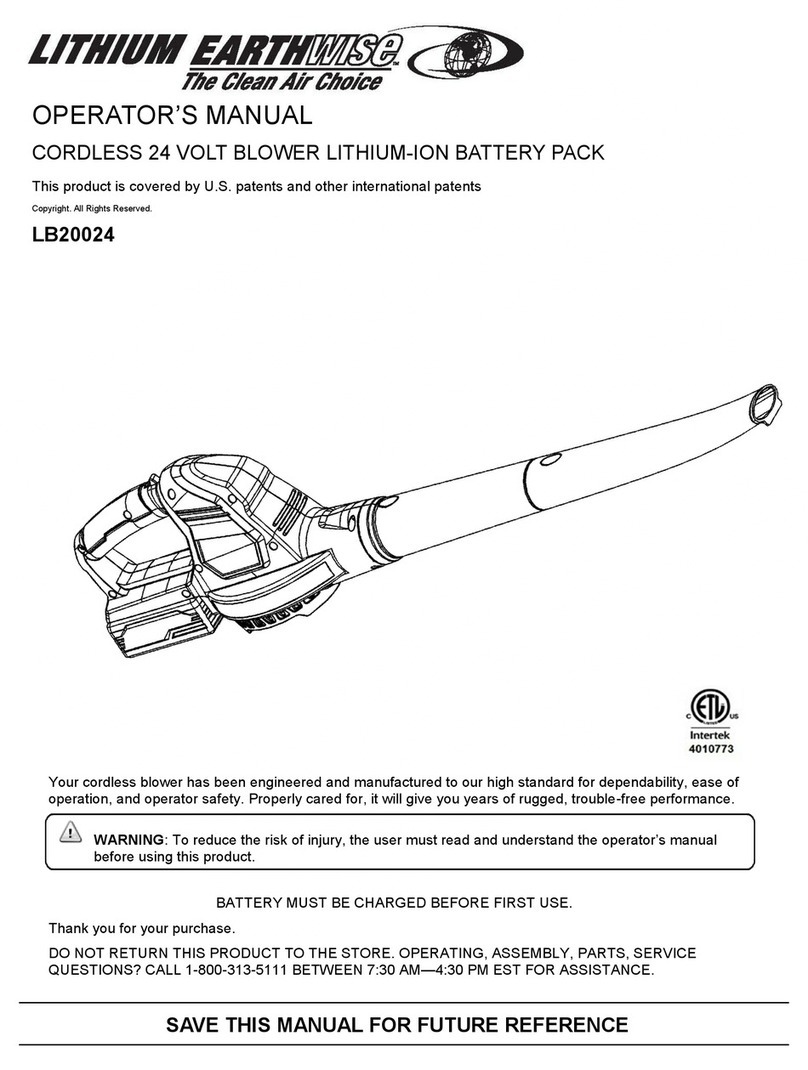
5
TTBPP52
Getting Started . . .
Fuel handling
>
Always switch the machine off, disconnect the spark plug connector and let the
machine cool down before refuelling it.
> Fuel vapour pressure may build up inside the fuel tank depending on the fuel used,
weather conditions and the tank venting system. To reduce the risk of burns and
other personal injuries, remove the fuel tank cap carefully to allow any pressure
build up to release slowly.
> Fuel and fuel vapour are highly ammable. Take care when handling fuel.
> Be aware of re risks, explosion and inhalation risks.
> Do not smoke while operating the machine, handling fuel or near fuel.
>
Ensure the spark plug connector is secure. Loose connector may cause electrical
arcing that could ignite combustible fumes and cause a re or explosion.
>
Always use suitable aids such as funnels and ller necks. Do not spill any fuel on
the machine or its exhaust system. There is a risk of ignition. Remove spilled fuel
carefully from all parts of the machine. Any residue which may be present must have
completely volatilised, before the machine is put into operation!
> Never refuel indoors.
> Never use the machine in environments where there is a risk of explosion. Exhaust
gases and fuel fumes are noxious. Fuel fumes can ignite.
> Avoid skin contact with petrol.
>
Do not eat or drink, while you are refuelling the machine. If you have swallowed
petrol or oil, or if petrol or oil has got into your eyes, then seek the advice of a doctor
immediately.
> Check regularly for leaks from the fuel tank cap, oil tank cap and fuel lines.
>
Use caution when handling fuel. To avoid any accidental res, move the machine at
least 3 metres from the fuelling point before starting the engine.
> Tighten the fuel tank cap thoroughly after relling the fuel tank.
> Do not operate the machine if it is leaking fuel.
> Do not remove the fuel tank cap while the engine is running.
> Do not store cans of fuel or rell the fuel tank in any place where there is a boiler,
stove, wood re, electrical sparks, welding sparks, or other sources of heat or re
which might ignite the fuel.
> If any fuel spillage occurs during refuelling, use a dry rag to wipe up spills and allow
remaining fuel to evaporate before starting the engine on again.
> If you have spilt fuel on yourself or on your clothes, change your clothes and wash
any part of your body that has come in contact with fuel before turning the engine
on again.
> If fuel has ignited, put out the re with a dry powder re extinguisher.
Safety information





























